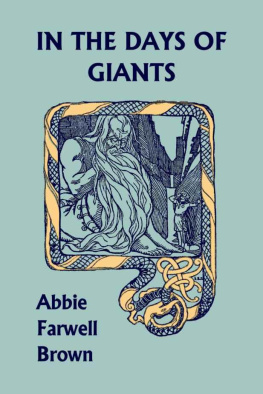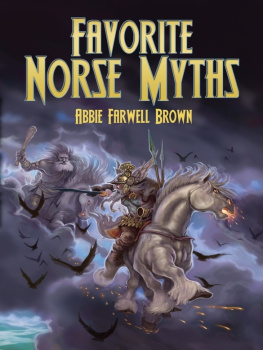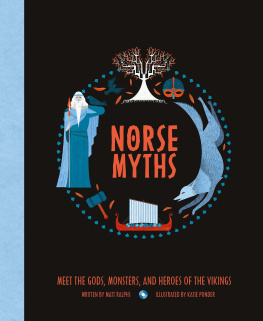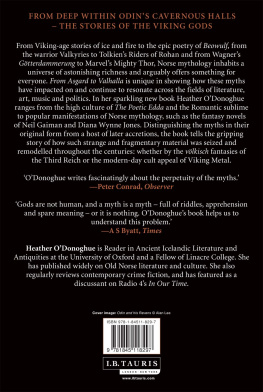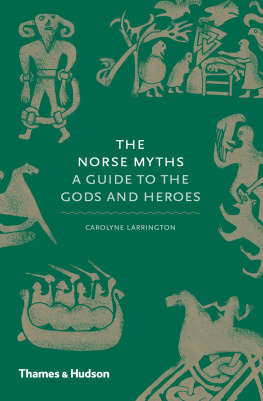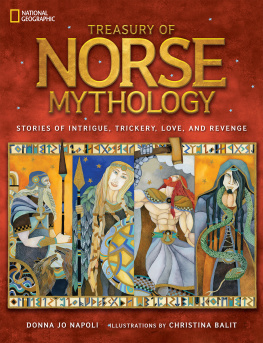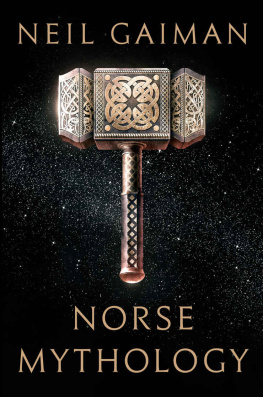In the Days of Giants
by
Abbie Farwell Brown
Yesterday's Classics
Chapel Hill, North Carolina
Cover and Arrangement 2010 Yesterday's Classics, LLC
All rights reserved. No part of this book may be reproduced or retransmitted in any form or by any means without the written permission of the publisher.
This edition, first published in 2010 by Yesterday's Classics, an imprint of Yesterday's Classics, LLC, is an unabridged republication of the work originally published by Houghton and Mifflin Company in 1902. This title is available in a print edition (ISBN 978-1-59915-044-4).
Yesterday's Classics, LLC
PO Box 3418
Chapel Hill, NC 27515
Yesterday's Classics
Yesterday's Classics republishes classic books for children from the golden age of children's literature, the era from 1880 to 1920. Many of our titles are offered in high-quality paperback editions, with text cast in modern easy-to-read type for today's readers. The illustrations from the original volumes are included except in those few cases where the quality of the original images is too low to make their reproduction feasible. Unless specified otherwise, color illustrations in the original volumes are rendered in black and white in our print editions.
Contents
The Beginning of Things
T HE oldest stories of every race of people tell about the Beginning of Things. But the various folk who first told them were so very different, the tales are so very old, and have changed so greatly in the telling from one generation to another, that there are almost as many accounts of the way in which the world began as there are nations upon the earth. So it is not strange that the people of the North have a legend of the Beginning quite different from that of the Southern, Eastern, and Western folk.
This book is made of the stories told by the Northern folk,the people who live in the land of the midnight sun, where summer is green and pleasant, but winter is a terrible time of cold and gloom; where rocky mountains tower like huge giants, over whose heads the thunder rolls and crashes, and under whose feet are mines of precious metals. Therefore you will find the tales full of giants and dwarfs,spirits of the cold mountains and dark caverns.
You will find the hero to be Thor, with his thunderbolt hammer, who dwells in the happy heaven of Asgard, where All-Father Odin is king, and where Balder the beautiful makes springtime with his smile. In the north countries, winter, cold, and frost are very real and terrible enemies; while spring, sunshine, and warmth are near and dear friends. So the story of the Beginning of Things is a story of cold and heat, of the wicked giants who loved the cold, and of the good sir, who basked in pleasant warmth.
In the very beginning of things, the stories say, there were two worlds, one of burning heat and one of icy cold. The cold world was in the north, and from it flowed Elivgar, a river of poisonous water which hardened into ice and piled up into great mountains, filling the space which had no bottom. The other world in the south was on fire with bright flame, a place of heat most terrible. And in those days through all space there was nothing beside these two worlds of heat and cold.
But then began a fierce combat. Heat and cold met and strove to destroy each other, as they have tried to do ever since. Flaming sparks from the hot world fell upon the ice river which flowed from the place of cold. And though the bright sparks were quenched, in dying they wrought mischief, as they do to-day; for they melted the ice, which dripped and dripped, like tears from the suffering world of cold. And then, wonderful to say, these chilly drops became alive; became a huge, breathing mass, a Frost-Giant with a wicked heart of ice. And he was the ancestor of all the giants who came afterwards, a bad and cruel race.
At that time there was no earth nor sea nor heaven, nothing but the icy abyss without bottom, whence Ymir the giant had sprung. And there he lived, nourished by the milk of a cow which the heat had formed. Now the cow had nothing for her food but the snow and ice of Elivgar, and that was cold victuals indeed! One day she was licking the icy rocks, which tasted salty to her, when Ymir noticed that the mass was taking a strange shape. The more the cow licked it, the plainer became the outline of the shape. And when evening came Ymir saw thrusting itself through the icy rock a head of hair. The next day the cow went on with her meal, and at night-time a man's head appeared above the rock. On the third day the cow licked away the ice until forth stepped a man, tall and powerful and handsome. This was no evil giant, for he was good; and, strangely, though he came from the ice his heart was warm. He was the ancestor of the kind sir; for All-Father Odin and his brothers Vili and Ve, the first of the gods, were his grandsons, and as soon as they were born they became the enemies of the race of giants.
Now after a few giant years,ages and ages of time as we reckon it,there was a great battle, for Odin and his brothers wished to destroy all the evil in the world and to leave only good. They attacked the wicked giant Ymir, first of all his race, and after hard fighting slew him. Ymir was so huge that when he died a mighty river of blood flowed from the wounds which Odin had given him; a stream so large that it flooded all space, and the frost-giants, his children and grandchildren, were drowned, except one who escaped with his wife in a chest. And but for the saving of these two, that would have been the end of the race of giants.
All-Father and his brothers now had work to do. Painfully they dragged the great bulk of Ymir into the bottomless space of ice, and from it they built the earth, the sea, and the heavens. Not an atom of his body went to waste. His blood made the great ocean, the rivers, lakes, and springs. His mighty bones became mountains. His teeth and broken bones made sand and pebbles. From his skull they fashioned the arching heaven, which they set up over the earth and sea. His brain became the heavy clouds. His hair sprouted into trees, grass, plants, and flowers. And last of all, the sir set his bristling eyebrows as a high fence around the earth, to keep the giants away from the race of men whom they had planned to create for this pleasant globe.
So the earth was made. And next the gods brought light for the heavens. They caught the sparks and cinders blown from the world of heat, and set them here and there, above and below, as sun and moon and stars. To each they gave its name and told what its duties were to be, and how it must perform them, day after day, and year after year, and century after century, till the ending of all things; so that the children of men might reckon time without mistake.
Sl and Mni, who drove the bright chariots of the sun and moon across the sky, were a fair sister and brother whose father named them Sun and Moon because they were so beautiful. So Odin gave them each a pair of swift, bright horses to drive, and set them in the sky forever. Once upon a time,but that was many, many years later,Mni, the Man in the Moon, stole two children from the earth. Hiuki and Bil were going to a well to draw a pail of water. The little boy and girl carried a pole and a bucket across their shoulders, and looked so pretty that Mni thrust down a long arm and snatched them up to his moon. And there they are to this day, as you can see on any moonlight night,two little black shadows on the moon's bright face, the boy and the girl, with the bucket between them.
The gods also made Day and Night. Day was fair, bright, and beautiful, for he was of the warm-hearted sir race. But Night was dark and gloomy, because she was one of the cold giant-folk. Day and Night had each a chariot drawn by a swift horse, and each in turn drove about the world in a twenty-four hours' journey. Night rode first behind her dark horse, Hrmfaxi, who scattered dew from his bit upon the sleeping earth. After her came Day with his beautiful horse, Glad, whose shining mane shot rays of light through the sky.

